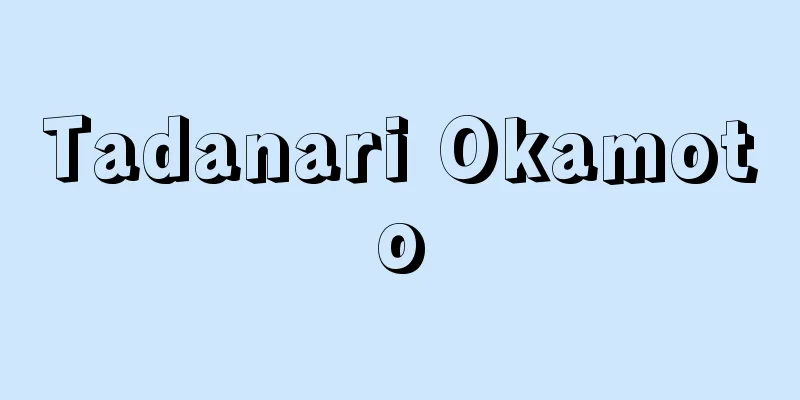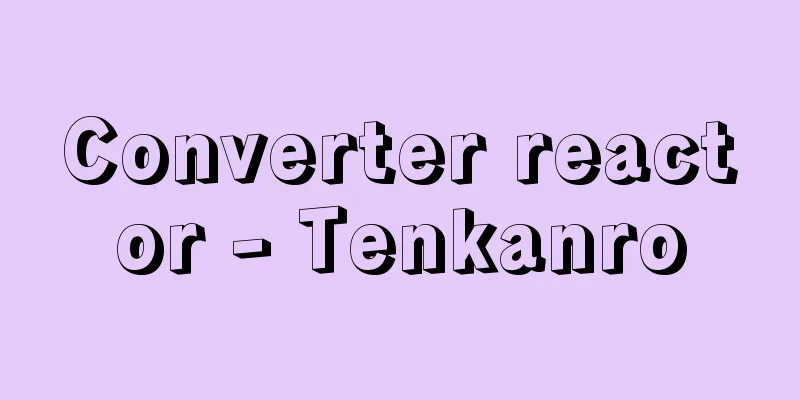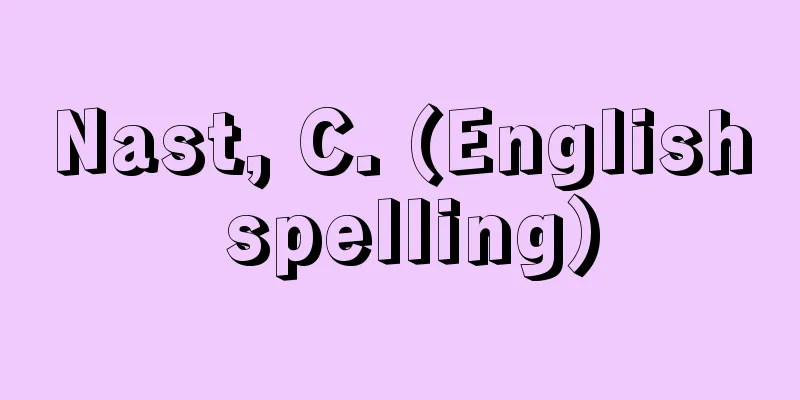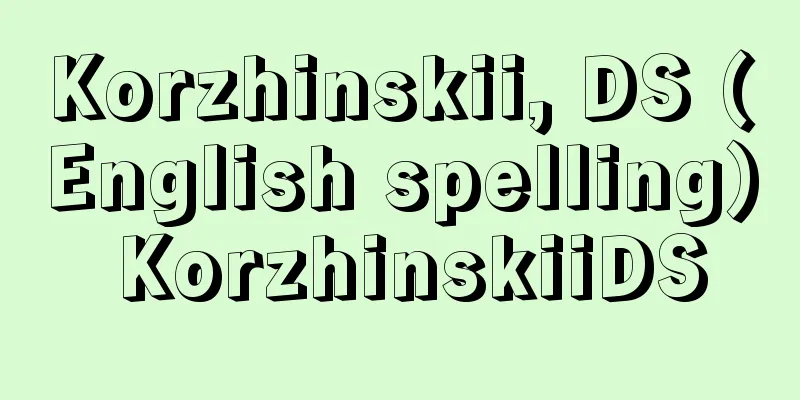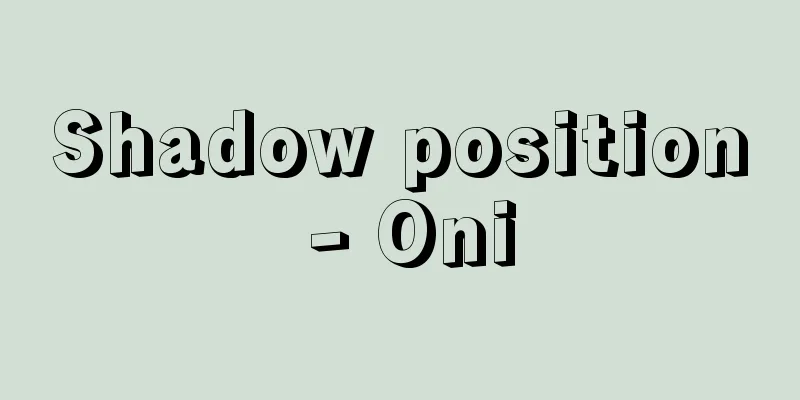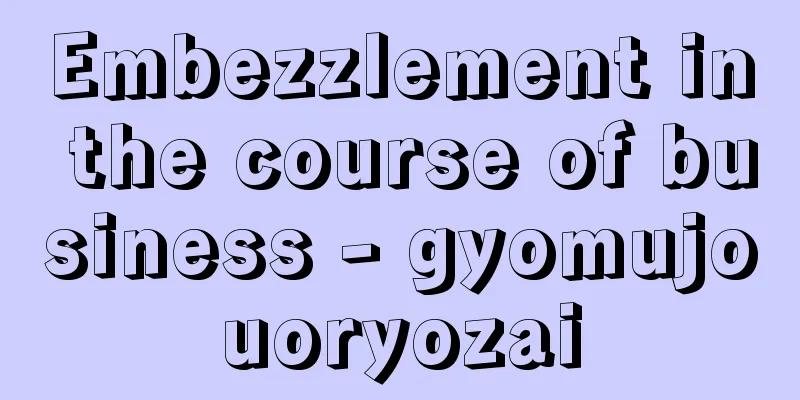Conditioning - jokenzuke (English spelling)

|
An experimental manipulation in behavioral research. It originated from the research of the Russian physiologist Pavlov on conditioned reflexes, but whereas Pavlov's experiments used reflexes that were primarily directed at the secretory system, conditioning is widely used in psychology experiments, including reactions of the motor system. The reactions that are dealt with in psychological conditioning are not limited to conditioned reflexes, but are the behaviors of living organisms, and are therefore called conditioned responses. Conditioning is broadly divided into "classical conditioning" modeled on Pavlov's conditioned reflexes, and "instrumental conditioning" that deals with responses formed through reward training and avoidance training by American psychologist Thorndike and others. Another American psychologist, Skinner, also divided responses into respondent and operant. Respondent is an innate response that occurs regardless of the outcome of the response when the stimulus that induces it is constant, while operant is an acquired response that does not have a constant inducing stimulus, is a spontaneous response from the living organism, and is controlled depending on the outcome of the response. The conditioning of these responses is called S-type respondent conditioning and R-type operant conditioning, respectively, and has almost the same meaning as classical conditioning and instrumental conditioning. Recently, it is often classified into classical conditioning and operant conditioning. [Takashi Ogawa] Classical conditioningIn classical conditioning, which Pavlov performed on dogs, unconditioned stimuli (e.g. food) were repeatedly presented in pairs with conditioned stimuli (e.g. sound), and a reaction similar to the unconditioned reflex (saliva secretion) to the unconditioned stimulus was induced by the conditioned stimulus (conditioned reflex). It was said that a stimulus substitution occurred in the sense that the reaction of saliva secretion was induced by the conditioned stimulus instead of the unconditioned stimulus, but the amount of the conditioned reflex to the conditioned stimulus was less than that of the unconditioned reflex to the unconditioned stimulus, and the unconditioned reflex of saliva secretion is directly related to chewing and swallowing, but the conditioned reflex is not. Therefore, some people believe that the conditioned reflex is not a perfect copy of the unconditioned reflex, but a fractional component response, or an anticipatory response. The conditioning process differs when the time interval between the conditioned stimulus and the unconditioned stimulus is varied. In forward conditioning, where the conditioned stimulus is presented before the unconditioned stimulus, simultaneous conditioning, where the conditioned stimulus slightly precedes the unconditioned stimulus, is effective, while delayed conditioning, where the unconditioned stimulus is presented with a significant delay after the conditioned stimulus, and trace conditioning, where the conditioned stimulus and the unconditioned stimulus are not superimposed at all but are presented with a time gap after the conditioned stimulus has ceased, are not effective. Backward conditioning, where the conditioned stimulus follows the unconditioned stimulus, is difficult and the results are uncertain. After conditioning has been formed, if the conditioned stimulus is repeatedly presented without the unconditioned stimulus, the conditioned reflex gradually disappears (experimental extinction). However, if the conditioned stimulus is presented a short time after extinction, the conditioned reflex reappears (spontaneous recovery). It is expected that the conditioned reflex is controlled by both excitation and inhibition processes, and the inhibition process is thought to weaken over time. During conditioning, if a stimulus other than the conditioned stimulus is introduced, the conditioned reflex is weakened (external inhibition), and if a stimulus other than the conditioned stimulus is presented during extinction, the conditioned reflex that was almost lost may reappear (disinhibition). When a conditioned reflex is formed in response to a certain conditioned stimulus (e.g., a sound of 1000 vibrations), a conditioned reflex also occurs in response to a stimulus of the same dimension (e.g., a sound of 800 vibrations) (stimulus generalization). If one stimulus is conditioned and the other is eliminated, generalization does not extend to the eliminated stimulus (differential conditioning). After a conditioned reflex has been formed to a conditioned stimulus (sound), a conditioned reflex can then be formed to another conditioned stimulus (light) (higher order conditioning). After repeated pairing of two neutral stimuli (light and sound), if a conditioned reflex is formed using one of the conditioned stimuli, a conditioned reflex is immediately induced to the other stimulus (sensory pre-conditioning). [Takashi Ogawa] Operant (voluntary-action) conditioningOperant conditioning is operated according to the principles of classical conditioning, and similar aspects of conditioning and extinction are observed. However, while classical conditioning operates on stimuli (conditioned stimuli and unconditioned stimuli) independently of responses (conditioned reflexes), operant conditioning is premised on the emergence of responses (conditioned responses), and emphasizes the selective formation and maintenance of responses in response to positive or negative outcomes (reinforcement). Therefore, programs (reinforcement schedules) that determine how responses are reinforced based on the number of responses and the passage of time are being experimented with. A distinction is made between continuous reinforcement, which reinforces each response, and intermittent reinforcement, which reinforces responses intermittently. Intermittent reinforcement can be broadly divided into fixed interval reinforcement, which is constant over time, variable interval reinforcement, which is irregular, fixed ratio reinforcement for a certain number of responses, and variable ratio reinforcement for an indefinite number of responses. These are further modified and compounded to create numerous schedules, which consistently show the characteristic conditioning and extinction response process for each conditioned response. When a conditioned response is formed under a certain stimulus, this stimulus is called a discriminative stimulus, and stimulus generalization is observed for the discriminative stimulus, controlling the conditioned response (stimulus control). In addition, the discriminative stimulus may have a secondary role of reinforcement, which is called conditional reinforcement. [Takashi Ogawa] [Reference] |Source: Shogakukan Encyclopedia Nipponica About Encyclopedia Nipponica Information | Legend |
|
行動研究の実験操作。ロシアの生理学者パブロフの条件反射conditioned reflexの研究に端を発したものであるが、パブロフの実験が分泌系を主にした反射を用いたのに対し、運動系の反応を含めて広く心理学の実験で用いられている。心理学の条件づけで扱う反応は、条件反射に限らない生活体の諸行動であり、したがって条件反応conditioned responseという。 条件づけはパブロフの条件反射を模型とした「古典(的)条件づけ」classical conditioning、アメリカの心理学者ソーンダイクらの報酬訓練や回避訓練で形成される反応を扱う「道具(的)条件づけ」instrumental conditioningに大別される。また、同じくアメリカの心理学者のスキナーは反応をレスポンデントrespondent(応答的)とオペラントoperant(自発的・作動的)とに分けたが、レスポンデントは、それを誘発する刺激が一定で、反応の結果に関係なく生じる生得的反応であり、オペラントは一定の誘発する刺激はなく、生活体の側から自発的に作動する反応であって、反応の結果に依存して制御される習得的反応である。これらの反応の条件づけは、それぞれS型‐レスポンデント条件づけ、R型‐オペラント条件づけとよばれ、古典条件づけと道具条件づけと、ほぼ対応する意味をもっている。近来は、古典条件づけとオペラント条件づけとに分類することが多い。 [小川 隆] 古典(的)条件づけパブロフがイヌを用いて行った古典条件づけでは、無条件刺激(たとえば食物)unconditioned stimulusと、条件刺激(たとえば音)conditioned stimulusとの対呈示を反復し、本来、無条件刺激に対する無条件反射(唾液(だえき)分泌)unconditioned reflexと同様の反応が条件刺激によって誘発される(条件反射conditioned reflex)。唾液分泌という反応が無条件刺激のかわりに条件刺激によって誘発されたという意味で、刺激置換が生じたともいわれたが、条件刺激に対する条件反射の量は無条件刺激に対する無条件反射の量より少なく、また、無条件反射としての唾液分泌はそしゃく、嚥下(えんげ)と直接関連するが、条件反射としてのそれは関連しないことから、条件反射は無条件反射の完全な模写ではなく、部分的成分反応fractional component response、あるいは期待反応anticipatory responseであるという見方もある。 条件刺激と無条件刺激との時隔を種々に変化すると、条件づけの経過が異なる。条件刺激が無条件刺激に先だって呈示される先行性条件づけforward conditioningでは条件刺激がわずかに無条件刺激より先行する同時条件づけsimultaneous conditioningが有効で、条件刺激にかなり遅れて無条件刺激が呈示される延滞条件づけdelayed conditioning、条件刺激と無条件刺激とがまったく重ねられないで、条件刺激の終止後、時間を隔てて無条件刺激が呈示される痕跡(こんせき)条件づけtrace conditioningは有効でない。条件刺激が無条件刺激に後行する逆行性条件づけbackward conditioningは困難で、結果が不確かである。 条件づけが形成されたのち、無条件刺激を伴わないで条件刺激だけを反復呈示すると条件反射はしだいに消失する(実験的消去experimental extinction)。しかし、消去後、しばらくして条件刺激を呈示するとふたたび条件反射が出現する(自発的回復spontaneous recovery)。条件反射は興奮と制止との両過程に制御されることが予想され、制止過程は時間経過に従って弱められるとみられている。条件づけの途次、条件刺激以外の刺激を導入すると条件反射が弱められるし(外制止external inhibition)、消去時、条件刺激以外の刺激を呈示すると消失しかけた条件反射が再現することがある(脱制止disinhibition)。 ある条件刺激(たとえば1000振動の音)に対して条件反射を形成すると、それと同一次元の刺激(たとえば800振動の音)に対しても条件反射が生じる(刺激般化stimulus generalization)。一方の刺激を条件づけ、他方を消去すると消去刺激には般化は及ばない(分化条件づけdifferential conditioning)。 条件刺激(音)に対する条件反射が形成されたのち、別の条件刺激(光)に対して次々に条件反射を形成することができる(高次条件づけhigher order conditioning)。二つの中性刺激(光と音)を反復対呈示したのち、一方の刺激を条件刺激として条件反射を形成すると、他方の刺激に対してただちに条件反射が誘発される(感性前条件づけsensory pre-conditioning)。 [小川 隆] オペラント(自発的‐作動的)条件づけオペラント条件づけは古典条件づけの原理に従って操作され、これと類似した条件づけ、消去の諸様相が認められる。しかし、古典条件づけでは反応(条件反射)と独立に刺激(条件刺激・無条件刺激)が操作されるが、オペラント条件づけでは反応(条件反応)の出現が前提であり、反応の積極的・消極的結果(強化reinforcement)に対する反応の選択形成・維持が重視される。したがって反応数・時間経過によってどのように強化されるかのプログラム(強化スケジュールschedules of reinforcement)が実験されている。反応ごとに強化する連続強化continuous reinforcementに対して、反応生起に間歇(かんけつ)的に強化する間歇強化intermittent reinforcementが区別される。間歇強化は時間に関して一定な定間隔fixed interval強化と、不規則な変間隔variable interval強化、一定の反応数ごとの定率fixed ratio強化、不定の反応数に対する変率variable ratio強化に大別される。これらはさらに、修飾・複合され多数のスケジュールが組まれるが、これらによって条件反応はそれぞれ特徴的な条件づけ、消去の反応経過を定常的に示している。一定の刺激の下で条件反応が形成される際、この刺激は弁別刺激というが、弁別刺激について刺激般化が認められ、条件反応が制御される(刺激性制御stimulus control)。また、弁別刺激が二次的に強化の役目をもつことがあり、これを条件性強化conditional reinforcementという。 [小川 隆] [参照項目] |出典 小学館 日本大百科全書(ニッポニカ)日本大百科全書(ニッポニカ)について 情報 | 凡例 |
<<: Securities and Exchange Commission
>>: Conditional rights - conditional rights
Recommend
Scientific testing station
...Due to the strict restrictions on the admissib...
Beaucarnea recurvata (Nolina recurvata) - Beaucarnea recurvata (English name)
A small tree of the Agavaceae family. Native to Me...
Breda - Breda (English spelling)
A city in the province of Noord-Brabant in the so...
mononuclear phagocytic system
…Monocytes, macrophages, plasma cells, and lympho...
Dian Dang Pu (English: Dian Dang Pu)
Pawn shops in old China. Both dian and dō mean the...
Dutch Gin - Holland Gin
…a type of distilled alcoholic beverage made from...
Pressurized fuselage
The atmospheric pressure decreases the higher you ...
Tadokoro - Tadokoro
This refers to the land held by powerful clans be...
Jimyoin lineage
One of the two imperial lines that split and conf...
Plotinos
A Greek philosopher and mystic who represents the...
Village system - Gosonsei
The Edo period rural system inherited the charact...
SOM - Standard Operating Method
Abbreviation for System Object Model. A new method...
Collision
A phenomenon in which two objects gradually appro...
Yoshinaga Asano
1681-1752 A daimyo in the mid-Edo period. Born Ju...
Ploetz, A.
…Haeckel's view of society, which holds that ...

